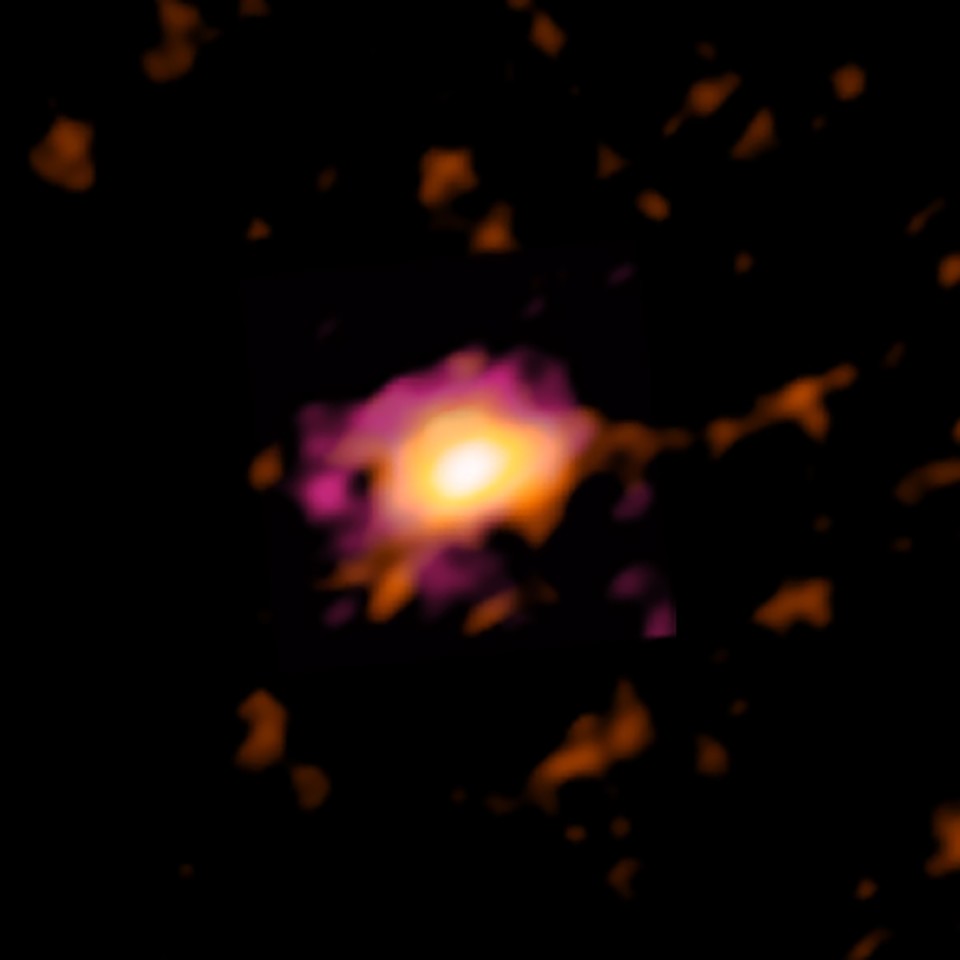The Milky Way is a rotating disk-shaped galaxy, and is pretty stock standard for its age. It’s generally believed that it took billions of years for galaxies to take on that shape, but now astronomers have discovered an ancient disk galaxy, which emerged at least 4.5 billion years earlier than previously thought possible.
In the universe today, many galaxies – ours included – take on the familiar shape of a rapidly rotating disk. Models of galaxy formation suggest that these only arose about six billion years after the Big Bang. Before that, the universe was a bit too tumultuous.
“Most galaxies that we find early in the universe look like train wrecks because they underwent consistent and often ‘violent’ merging,” says Marcel Neeleman, lead author of the study. “These hot mergers make it difficult to form well-ordered, cold rotating disks like we observe in our present universe.”
But now, astronomers have spotted an ancient galaxy that seems to do just that. Known as DLA0817g, or the Wolfe Disk, it looks like a modern disk galaxy, rotating at about 272 km/s (170 mi/s). But the kicker is that’s located about 12.3 billion light-years away from Earth, which means we’re seeing it as it was 12.3 billion years ago.
Somehow, the Wolfe Disk took on a disk shape just 1.5 billion years after the Big Bang, which is about 4.5 billion years sooner than was thought possible. The discovery suggests that there are unknown growth processes at work.
“We think the Wolfe Disk has grown primarily through the steady accretion of cold gas,” says J. Xavier Prochaska, co-author of the study. “Still, one of the questions that remains is how to assemble such a large gas mass while maintaining a relatively stable, rotating disk.”

ALMA (ESO/NAOJ/NRAO), M. Neeleman; NRAO/AUI/NSF, S. Dagnello
The Wolfe Disk was discovered in 2017 when the researchers were examining a quasar that appears nearby in the sky. The team observed that the quasar’s light was being partially absorbed as it passed through the galaxy’s hydrogen gas envelope. More recently, they were able to track its spin speed using the ALMA radio observatory.
Interestingly, these observations suggest that Wolfe isn’t an ancient overachiever – it was probably pretty normal for galaxies of the time.
“The fact that we found the Wolfe Disk using this method, tells us that it belongs to the normal population of galaxies present at early times,” says Neeleman. “When our newest observations with ALMA surprisingly showed that it is rotating, we realized that early rotating disk galaxies are not as rare as we thought and that there should be a lot more of them out there.”
And finally, looking at it in ultraviolet with Hubble revealed that the Wolfe Disk is (or was 12.3 billion years ago) undergoing extreme star formation, at a rate more than 10 times higher than the Milky Way. This, they suggest, may make it one of the most productive galaxies of its kind in the early universe.
The study was published in the journal Nature. The work is described in the video below.
Wolfe Disk NRAO Press Release
Source: National Radio Astronomy Observatory
Source of Article